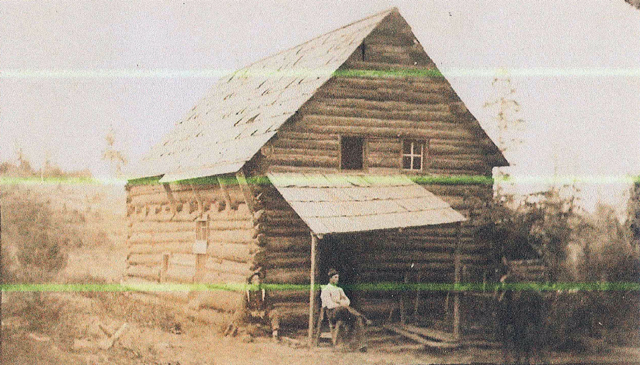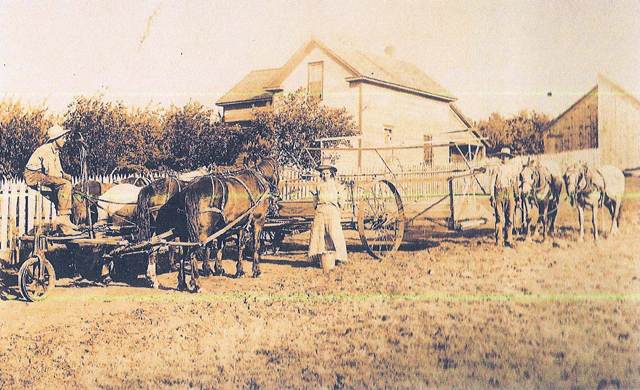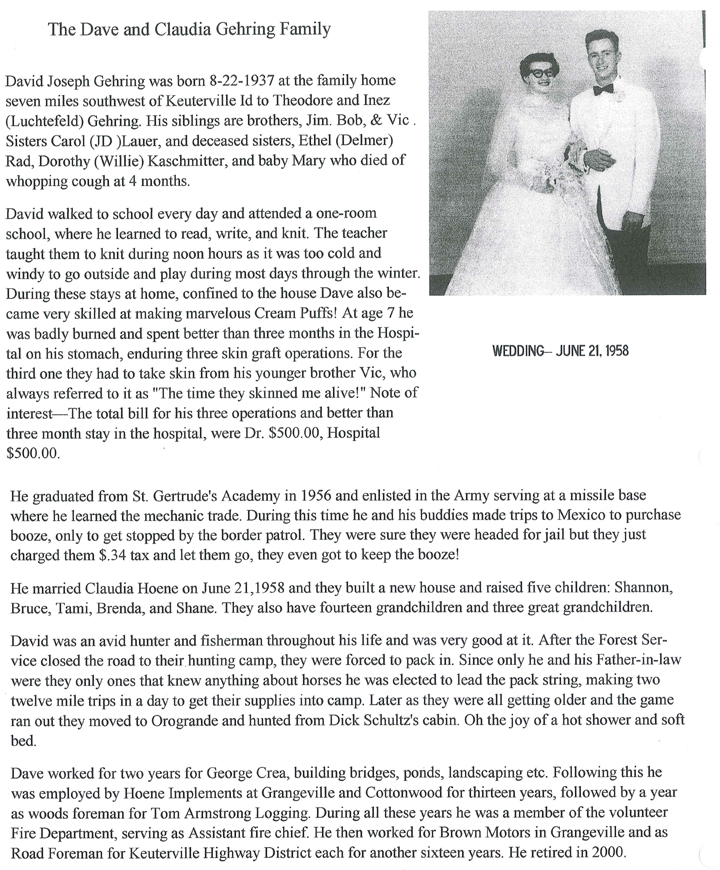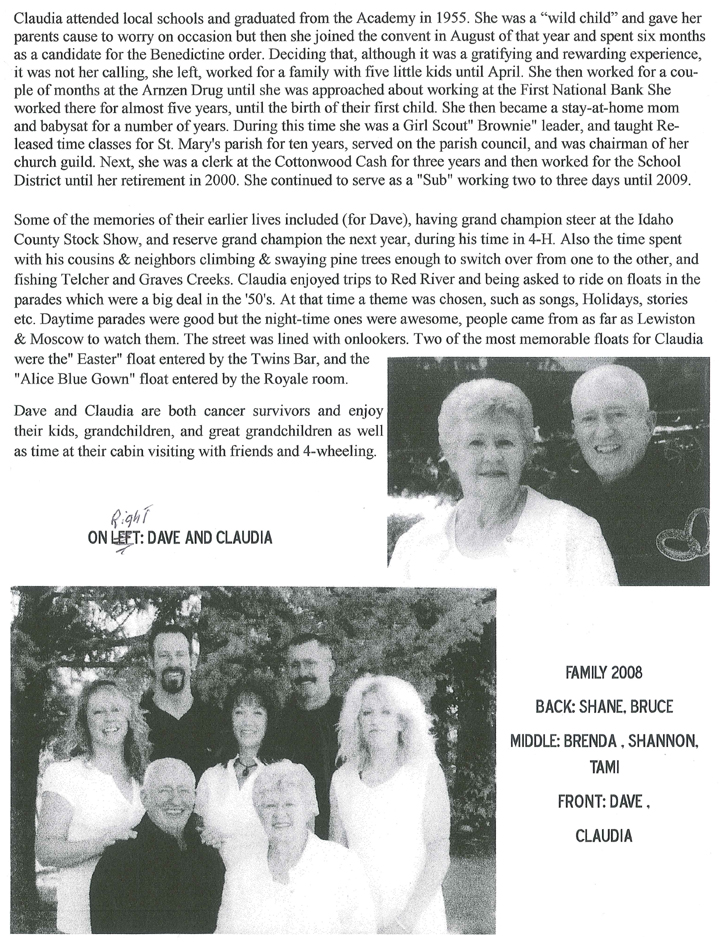| Cottonwood
to celebrate 150th year in 2012, area history included
(History continued from last week) As the story goes – there are so many parts to this area story. Each side track is important to the overall tale. After time goes by, later generations wonder why or how these things happen as they did. We have to remember the conditions of the time and place. Simple little chores like making dinner or lunch involved a lot more back then. No electricity and no small appliances. How different it was! Most of our ancestors coming to America in the 1850’s to 1900 came here to escape injustice and oppression that hung over their head in Europe and other countries. Just think of the hardships and danger involved. Especially those that brought their families with them. It sometimes took years to make plans and arrangements to free themselves from the conditions in the rest of the troubled world. No money, very little food and in some cases just the clothes on their backs. Sometimes from their decision to leave the old county this process was drawn out over several years and when they got to the United States it took several moves and more years before finally getting to the western states and eventually Idaho. They wanted, and were firm in their expectations, a free new world. Talk about people that knew the price of freedom! How often have you heard, “We must work hard and prove worthy of the chance God has given us?” These first settlers were very determined not to fail and even better, learned from their mistakes, as well as those who preceded them. Each family kept their history as a reminder of the many troubles now left behind and in many ways, this made the problems they now faced seem smaller. There were so many things going on in their lives that adjusting to their present conditions was, as usual, an ongoing process. For one thing, while 60 to 160 acres was a God-send, it soon became evident that our land here was not Illinois or Wisconsin. With the coming of new and better machinery the farms as well as the sawmills had to get bigger. Horses were put in the background over a fifty year period and most everyone had tractors and trucks and as time went on, each family soon had a car. Farms grew steadily in size and it took bigger and better machines and less man-hours to run the operation. Most of you have been part of this time of constant change and of course it goes on today and will continue. In these stories we see how the older people handled all this. It hasn’t been just luck that makes the ball go in the basket. It takes hours, days and years of experience to win in this ballgame of life. This then brings us to remembering another important part of this area – the building and developing of homes, ranches and farms. One of the first considerations was shelter. Look around you at some of the older buildings. Some go back to nearly the first settlers. Most start one step up from the log cabin and first lean-tos. These buildings didn’t just happen to be there. The homesteader had a lot of planning as to where the house, wood-shed and privy were to be located. With building and planning, one of the most important considerations was the location of a source of water. This is the reason most of the early day homes and farm buildings were built in a draw, which had been tested for amount and depth of the water. Once developed, it was well maintained. Sometimes a neighbor would share the same well. It seems that each, or at least every other group of settlers to come, there were one or two men who worked in the carpentry trade. It is also true that these fellows who were good at their trade had no trouble finding work to exercise their skills. We find in many stories were neighbors and friends exchanged or traded labor. Around 1900 labor was 75 cents up to $1.25 per day. Some pretty fair size houses were framed up for under $200 (money or trade or both). In those days the early day sawmill cut logs into rough lumber and certain kinds of logs were cut into 18”, 20” and 24” butt type chunks to be split into wood shakes or shingles. (usually when men were laid off because of mill breakdown). There were no electric “Skil” saws or powered chain saws so most of the specification cutting was down with a bow or hand saw. The sills or base rails for the house were set on level rocks or piles of rocks and strings were used to “square” the house. Later on some of these houses had cement foundations, basements and cellars dug out and poured, under and around them. Depending on the times, these were sometimes made of stone and concrete. Next would come the direction and slope of the roof (often adjusted for prevailing storm angle). As you can tell by looking around, the older house, barn or shed, had quite a bit more roof slope to it than the newer buildings today. These were dictated by the amount of annual snowfall and expected “snow load.” Some roofs had only rough 2”x4”s but most had 2”x6”s with carefully spaced 1”x4” boards to accommodate the shingles and set the proper “lays.” (No tarpaper in those days). The time it took varied widely depending on the other tasks at hand. The length of the day was also set by the amount of daylight. Next came the siding, which was “boards and bat.” Usually 10” boards nailed vertically with 1”x4” nailed over the crack on each side. Then usually the people moved in with a promise of “someday” for finishing up the walls and inside doors, etc. In some cases we had stories of kids taking off their shoes and running around outside of the house in the snow – that way when they went up to bed it always felt warm! Yes, let’s not forget the chamber pots! Widely used and not so soon forgotten by those who used them. “Those were the days” all right, just think how long it took to do the chores around the house. More about this next week. 

Some of the early day homes and farms showing some of the construction styles. The top photo is the Louis Klapprich home in the early 1900’s while the lower photo shows the Frank Rad place. 

Another story page from the upcoming book. |
|